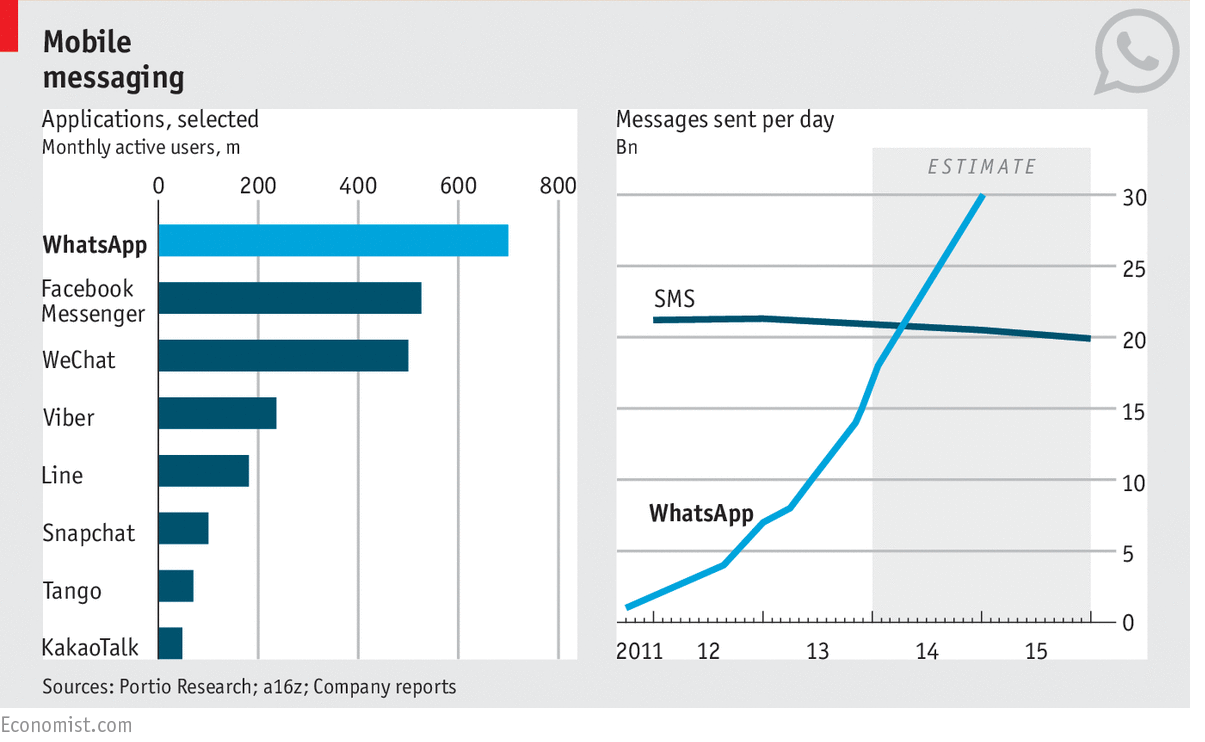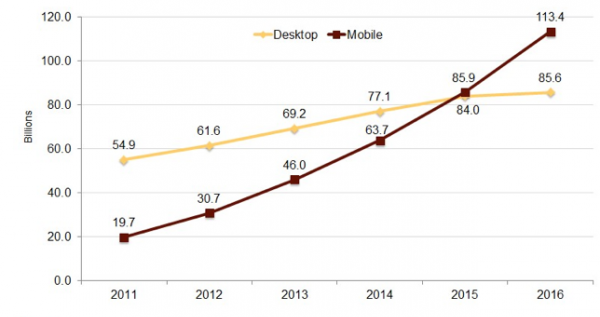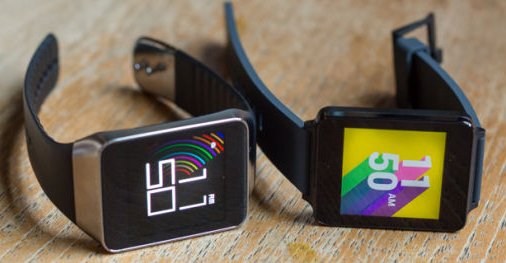by Charles River Interactive | February 17, 2016 | Paid Search
Customer Match gives advertisers an incredible new tool that allows them to leverage their own CRM data to target with pinpoint accuracy and deliver extremely relevant messaging to existing and potential customers.
As an agency we started getting familiar with this concept through Facebook’s Audience Targeting, which gives advertisers the ability to upload their email lists into the Facebook Ads platform, and serve ads to users on those lists. We’ve seen some great successes with clients across a number of industries, so we’re very excited that something similar will be available within Google.
How Does Google Customer Match Work?
Customer Match creates targeted lists for campaigns across Google-related channels: Google Search, YouTube and Gmail. You upload your customer information, such as e-mail addresses, and this tool helps you build customized experiences for them.
Here are the basics of how it works:
- Advertisers create marketing lists based on customer data
- AdWords matches Advertiser’s email addresses to Google accounts
- Target ads reach audiences across devices and channels
Benefits of Google Customer Match
Customer Match can serve multiple marketing objectives. Among its key benefits, you could use it to:
- Generate awareness: Announce a new product to past purchasers
- Influence consideration: Serve ads to lapsed customers or users with empty carts
- Drive Purchases: Take advantage of cross selling and upselling to existing customers
- Increase Loyalty: Present enticing offers to your most valuable customers
How We Use Customer Match at Charles River Interactive
We’ve helped a number of our clients get a jump on advertising with Customer Match already. Some examples include:
- A non-profit client looking to drive holiday card sales using a list of past donors. Paired with holiday card keywords, this list will serve as a remarketing list for search ads to previous donors searching for holiday cards.
- An ecommerce client selling automotive accessories is using Customer Match to serve Gmail Sponsored Ads to past purchasers based on the make and model of vehicle they have previously purchased
- We are working with a number of our higher education clients to build a strategy designed to drive deposits from accepted undergraduate students. Using a customer match will allow these institutions to continue their conversation with perspective students through search, Gmail sponsored ads and on YouTube.
Interested in learning more about SEO and paid search trends? Read more from our blog, View from the Charles:
by Charles River Interactive | February 11, 2016 | Industry Trends, Paid Social, Uncategorized
It took a week’s worth of bad news to make people talk about Twitter again. Today, you’re probably hearing a lot about the future of Twitter, and wondering whether it has one.
From the #RIPTwitter backlash to news that user growth has “come to a halt” – as a few media outlets put it – the company is fighting to prove it’s still relevant.
If you’re a marketer, you want to know what all of this might mean for your brand engagement on Twitter. Here’s what you need to know:
Twitter User Growth
Twitter released its fourth quarter earnings report late Wednesday. Not only has the company failed to increase new users since it went public, it has actually lost monthly active users from the previous quarter, according to news reports. Investors were clearly disappointed, as stocks fell in after-hours trading.
The timing couldn’t have been worse, as it arrived on the heels of the #RIPTwitter drama. The company’s fight is now two-fold: Proving itself to investors and preserving the loyalty of the angry users it desperately needs.
#RIPTwitter: What Does it Mean?
Twitter has been hinting for a year that an algorithm was in the works. On Friday, Buzzfeed broke the news that it would be introduced this week, sending the twittersphere into a frenzy. Enraged users created the #RIPTwitter hashtag to protest the change, officially announced Wednesday.
Why the revolt? Users say Twitter is copying the Facebook playbook. Until now, the real-time Twitter feed has been its key differentiator, setting it apart from other platforms. Now, users worry the algorithm will vet everything they see.
What is an Algorithmic Timeline?
- How it works now: The feed appears in reverse chronological order. Users see the latest tweets from people they follow.
- The problem: If you don’t log in for a while, your real-time feed keeps updating without you.
- What changes: If you log in after a hiatus, the new algorithm will highlight the top missed tweets it thinks are most relevant to you, based on your activity and other factors. (Read more about the feature on Twitter’s blog.)
- What stays the same: After these “top missed tweets,” users continue on to their normal feed.
- Who has to use it: It’s an optional setting that’s rolling out in waves.
How Does the Twitter Algorithm Impact Brands?
So die-hard Twitterheads are upset. As a marketer, should you be, too? It doesn’t look that way.
Here’s what changes:
- The algorithm will only pick tweets from a user’s followers. It will not select ads.
- It will factor in organic engagement, so promoted tweets can’t cheat the algorithm.
- The company promises it’s not moving toward a “pay to play” system for advertising, like what Facebook uses.
- Your brand’s unpaid tweets are still equal to user tweets. They may appear as top highlights, if they get enough traction.
That means you should continue to invest in and distribute high-quality content. And who knows, maybe these changes will actually help you reach more people – that is, if Twitter makes good on its promise to Wall Street for user growth this winter.
Interested in learning more about social media trends? Read more from our blog, View from the Charles:
by Charles River Interactive | February 2, 2016 | Industry Trends, Paid Social
Snapchat debuted as an app with a reputation as a tween/teen alternative to more traditional channels like Facebook and Twitter.
Today, Snapchat has begun to emerge as a legitimate social network that brands and agencies cannot ignore. Consider these stats from Snapchat:
- 60 percent of 13 to 34-year-old smartphone users in the U.S. are on Snapchat
- 5 billion-plus daily videos views
- Over 100 million daily active users
According to these numbers, Snapchat is growing up. And for smart marketers, it presents a key opportunity to reach a coveted demographic.
What is Snapchat?
Founded in 2011 by three Stanford students, Snapchat had a clear goal: Provide a social media platform where posts, pictures and opinions shared “in the moment” would not haunt a user’s online reputation forever. It promised the ability to be spontaneous and honest without those 2 a.m. college posts popping up during future job interviews.
How Does Snapchat Work?
Snapchat is a smartphone app that allows its users to take pictures and video, add filters, text and emojis, and share them directly with friends.
The key to Snapchat’s appeal – and success – is its short window: No post lasts longer than 24 hours, and some disappear in seconds. This is important because it builds an engaged audience. Users keep checking in so they don’t miss posts and because they can only see them once, they make it count.
Snapchat and Marketing: What You Need to Know
Snapchat provides advertising opportunities with their Discover section, which is populated by big name publishers like ESPN, VICE, Wall Street Journal and many more.
- Targeted advertising opportunities: Recently, Snapchat has announced wider ranging advertising options that will allow digital marketers to target specific groups of people. This type of ad product will allow brands to directly engage with their target audience depending on a number of factors like location, interests, etc.
- Compelling campaigns through My Story: Brands can use the ‘My Story’ feature to highlight a product or service in little bite size chucks with a reveal at the end and a strong call to action. My Story compiles a series of posts – or snaps – in chronological order to tell a story.
- Comprehensive social media strategy: Brands can use their existing social media groups in Facebook, Twitter, and Instagram to add more followers on their Snapchat page via posting the Snapchat user QR code as their profile picture or a straight up image post. (Be bold, make your Snapchat QR code your Facebook profile image and watch your followers jump higher.)
While Snapchat is still in the early stages of growth, I’m seeing more and more 30+, 40 + individuals creating and sending snaps to their friends and colleagues. With every image having a permanent home elsewhere, sharing “of the moment” images/video to friends creates more of an intimacy with your friends. However as the user base of Snapchat moves to an older demographic, having opportunities to deliver your message to where the attention is of your audience will further validate using Snapchat as one of your social media channels.
Interested in learning more in social media trends? Read more from our blog, View from the Charles:
The Rise of Mobile Chat Apps
Facebook & Twitter Unleash New, Exciting Features
by Charles River Interactive | January 18, 2016 | Industry Trends, Organic Search
What is a mobile messaging app?
Digital marketing reports have suggested that mobile chat is the “next killer app” for 2016. Mobile messaging apps are a cost effective way to send messages and media in real-time from sender to receiver on a mobile device. Unlike smartphone text messages, mobile chat apps are free stand-alone programs that have evolved into mini-platforms, incorporating a wide set of tools like built-in web browsing, shopping, payment options, online communities, web-based video, and on-demand communication. In 2015, AdAge reported that the main contenders in the U.S mobile messaging app space are Facebook Messenger, Snapchat, and WhatsApp. However, Adweek’s 2016 predictions suggest that global players like WeChat, Line, Kik, and Viber are beginning to become popular among brand marketers and millions of millennials. Most of these mobile messaging apps have similar features, but each offer different tools that impact the way businesses and users engage on these platforms.
Most popular global messenger apps, based on a number of monthly active users.

What does this mean for Google?
The Wall Street Journal recently reported that Google is developing a new mobile chat app in efforts to maintain its position as a top search tool. Although Google’s new service is still in the works, reports have suggested that Google plans to develop an “artificial intelligence-enhanced” platform to contend with Facebook owned WhatsApp and Messenger. In fact, The WSJ suggests that Google’s new app would enable users to message one another or a chatbot, a computer program that engages in human conversation. These chatbots have the ability to figure out a range of appropriate responses and remember earlier conversations. For instance, chatbots can help a human troubleshoot IT problems. This way, users won’t have to leave the app to discover new information.
How does mobile messaging apps benefit clients?
According to research conducted by Activate, Inc., mobile messaging apps have grown with 2.5 billion registered users in 2015 and an additional 1.1 billion new users expected by 2018. Mobile chat is a powerful tool for businesses because the stats show consumers prefer to be engaged in this manner. While messaging apps provide excellent personal support, eliminate phone calls, and foster consumer-brand relationships, there are additional benefits for businesses. Given that consumers look to brands to meet immediate needs, mobile chat apps offer an interface for a customer to ask what they want on-demand in a comfortable space. That is, brands can now reach consumers during their purchasing decisions. In addition, specific features of mobile messaging apps give connected consumers access to essential store and product information like inventory availability, product reviews, and a user-friendly shopping cart. With that, mobile messaging platforms provide an opportunity for businesses to tailor their digital marketing strategies in way that will organically insert themselves into mobile conversations.
by Charles River Interactive | December 4, 2015 | Industry Trends, Organic Search
CRI has researched the future of voice search and how it relates to the ongoing SEO strategy for our clients. Mobile search has overtaken desktop searches and companies need to tailor their SEO practices towards this growing trend, which now includes voice search.
US Local Search Market: Mobile vs. Desktop

What is Voice Search?
The popularity of voice search is growing as more searches are conducted on mobile devices. Voice searches are conducted when a user talks to their device to obtain information that would have normally been searched by typing in a query. The Google Search App for iOS and Android gives you the ability to ask a question out loud and the search app will speak your answer right back to you. Users are not given a list of SERPs and instead are receiving one piece of information at a time. This information is populated from optimizations made to the content of the pages and Knowledge Graph information. Voice search is available on desktops as well; the little microphone in the search bar gives users the ability to speak their search query.

The growing popularity of smart watches has increased the use of voice search in 2015 and that trend will continue in 2016. Smart watches provide one answer to search queries and optimizing your content towards those search queries is important.
How Does Voice Search Benefit Clients?
Studies have shown that mobile queries have strong local intent (between 40%-80%); using these stats, we can assume mobile and wearable devices are going to provide a plethora of local search results. More so, this is the kind of intent we want to make sure we’re properly optimized for, as on average, a mobile query results in two follow up actions by the user. Those follow up actions could consist of asking for more information or asking for directions.
Having optimized content that focuses on conversational keywords will help clients show up as the number one option when their keyword phrases are voice searched. By keeping ahead of the curve, and by anticipating the advances in voice recognition and natural language search criteria, businesses have a better shot at improving, and maintaining, their online visibility in the future.
Building out Google’s Knowledge Graph
The use of Google’s Knowledge Graph is an integral part of the process that gives users smarter answers.

Building out the content on the website and utilizing robust Google My Business pages is an important part of populating the Knowledge Graph with usable information. A new method for doing this is JSON-LD, which uses Google Tag Manager and JavaScript to tell Google what the most important accurate information is. By using this code, we can build relationships between the site and crucial content so that Google can place more emphasis on that information being pulled into the Knowledge Graph. The Knowledge Graph then provides accurate information to all the voice search queries.
CRI works with clients to implement conversational phrases into the FAQ page and other important pages that mimic what a user might ask on their mobile device. Using these long tail keywords will capture more of the traffic using mobile and wearable devices with voice search activated. The use of these phrases can be fine-tuned so they work with existing content.
In Conclusion
Writing content the way your audience speaks is one of the best ways to engage with people that search for your page and it keeps them coming back. In the past, targeting specific keywords was enough to boost your rankings with search engines. Users are now searching in more broad terms that include sentences. “Where is Acme Motors located” and “What time does Acme Motors close” are a couple of examples of queries that might be searched by voice. People search for things the way they speak and ask questions, so it is important to build out pages with all the relevant information needed to achieve a positive result when one of these questions is asked.
Wearable device searches are going to gain more popularity since users will be doing more voice searches. Websites that answer questions and use common phrasing are going to outrank those that are just stuffed with keywords in their content. Optimizing a website for voice searches takes this semantic thinking to a new level. A voice search is done in a more conversational, natural way, so a website must be optimized accordingly. By shifting the SEO focus to include this portion of the search traffic, we can position our clients for success in local and voice search.




